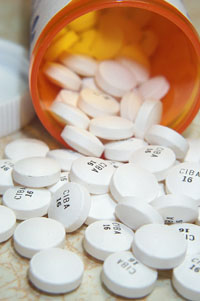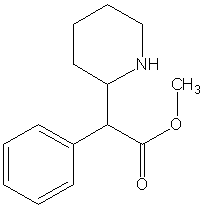* EVIDENCE-BASED ANSWER
Most children with attention deficit/hyperactivity disorder (ADHD) who are started on methylphenidate will respond favorably to a dose increase if the initial dose does not sufficiently reduce symptoms. Once titrated to an effective maintenance dose, frequent follow-up is necessary to monitor for side effects and recurring symptoms. The dose of methylphenidate can then be increased further for better symptom control which may be warranted in most cases.
In some children, methylphenidate may not achieve response even at high doses or may cause intolerable side effects. For these children, start a different stimulant medication (strength of recommendation: B, based on extrapolation of 1 randomized controlled trial).
* EVIDENCE SUMMARY
Most studies of ADHD medication have lasted fewer than 4 months. The National Institute of Mental Health Collaborative Multisite Multimodal Treatment Study of Children with Attention Deficit/Hyperactivity Disorder (known as the MTA study) is the longest treatment study of children to date. This study--a 28-day, double-blind placebo-controlled trial--enrolled children aged 7 to 9 years with ADHD and compared 4 treatment strategies (including medication and behavioral interventions) over 14 months. (1-3)
Of particular interest was the dose-titration evaluation at the beginning of the study. Daily dose-switching titration of methylphenidate was used to identify the optimal starting dose for each child assigned to receive medication. In all 289 children were randomized to receive methylphenidate, and 256 completed the titration (17 children refused to take medication, 1 moved, 4 had side effects, 4 had missing data, and, 7 stopped mid-titration because of inability to follow the titration protocol).
Of the 256 children who completed titration, 198 (77%) responded favorably to 1 of the following doses: low (15 mg/day), intermediate (25 mg/day), or high (35 mg/day for children weighing less than 25 kg; or 50 mg/day for children weighing 25 kg or more). Of the remaining 23%, 32 children responded best to placebo and 26 were methylphenidate nonresponders and were subsequently placed on dextroamphetamine.
Children who responded to methylphenidate entered the 13-month maintenance phase on the optimal dose identified in the titration trial. They were monitored by monthly re-examination and review of information from parents and teachers regarding ADHD symptoms and potential drug side effects. The dose was changed if symptoms were not well controlled or if side effects were present. Subsequently, if no effective and well-tolerated dose of methylphenidate could be identified, the drug was deemed ineffective for that child and was replaced by another medication.
Of the children who responded to methylphenidate, 88% were still taking it at the end of the maintenance trial; 29% were still taking the titration-determined dose of methylphenidate, 18% took a lower dose, and 41% took a higher dose as their "optimal" dose, at which there were no clinically significant symptoms, or "no room for improvement." The mean dose increased from 31 mg/day at the start to 34 mg/day at the end of the study. Of the 430 total changes in dose made during the maintenance period, 62% were dose increases.
While commendable for its design and large study population, the MTA study had several limitations. The titration trial's complex method of determining each child's "best dose" may not be feasible in clinical practice. Furthermore, the study enrolled only children aged 7 to 9 years, while ADHD affects a much broader age range. Finally, the chronic nature of ADHD limits the generalizability of this study beyond 14 months. Additional long-term studies are needed.
* RECOMMENDATIONS FROM OTHERS
The most common strategy for managing children taking methylphenidate is to start with a low dose and gradually adjust upward, as required by residual symptoms and as allowed by side effects. This escalating-dose titration reflects typical practice in the United States, as described in several clinical guides. (4,5) The Physician's Desk Reference states that the maximum total daily dose is 60 mg for methylphenidate, and experts often limit the upper range to 25 mg for a single dose. (6)
The American Academy of Child and Adolescent Psychiatry suggests using a consistent titration schedule with weekly increases in increments of 5-10 mg per dose to achieve symptom control. Alternatively, a fixed-dose titration trial similar to that found in the MTA study may be employed, in which a full set of different doses is switched on a weekly basis. If the top recommended dose does not help, a change in drug or psychosocial intervention may be more beneficial than an increase in methylphenidate dose. (6)
* CLINICAL COMMENTARY
It is disheartening to watch a bright child receive D's in school just because he or she cannot pay attention. Treating children with ADHD is one of the most clinically rewarding behavioral issues we can address as primary care physicians.
The escalating-dose titration and effective maintenance of methylphenidate can seem intimidating. We fear the side effects and are unsure if raising the dose of methylphenidate will have any benefits.
Clearly, it is shown that raising the methylphenidate dose brings further benefits for most children, but short-acting forms (such as Ritalin) frequently have intolerable side effects. Several long-acting forms of methylphenidate (Concerta, Metadate CD, Methylin ER, and Ritalin SR) are now on the market. This allows us to raise the dose as high as 54-60 mg/day with much less drug intolerance. For children who are benefiting from methylphenidate but cannot tolerate the side effects, consider the long-acting form.
John Hill, DO, University of Colorado Health Sciences Center, Denver
REFERENCES
(1.) Greenhill LL, Abikoff HB, Arnold LE, et al. Medication treatment strategies in the MTA Study: relevance to clinicians and researchers. J Am Acad Child Adolesc Psychiatry 1996; 35:1304-1313.
(2.) Greenhill LL, Swanson JM, Vitiello B, et al. Impairment and deportment responses to different methylphenidate doses in children with ADHD: the MTA titration trial. J Am Acad Child Adolesc Psychiatry 2001; 40:180-187.
(3.) Vitiello B, Severe JB, Greenhill LL, et al. Methylphenidate dosage for children with ADHD over time under controlled conditions: lessons from the MTA. J Am Acad Child Adolesc Psychiatry 2001; 40:188-196.
(4.) Dulcan M. Using psychostimulants to treat behavior disorders of children and adolescents. J Child Adolesc Psychopharmacol 1990; 1:7-20.
(5.) Szymanski ML, Zolotor, A. Attention-deficit/hyperactivity disorder: management. Am Fam Physician 2001; 64:1355-1362.
(6.) Greenhill LL, Pliszka S, Dulcan MK, et al. Practice parameter for the use of stimulant medication in the treatment of children, adolescents, and adults. J Am Acad Child Adolesc Psychiatry 2002; 41:26S-49S.
Annamarie D. Ibay, MD, and Lynda M. Bascelli, MD, West Jersey--Memorial Family Practice Residency at Virtua, Voorhees, NJ; Rebecca S. Graves, MLS, University of Missouri-Columbia
COPYRIGHT 2003 Dowden Health Media, Inc.
COPYRIGHT 2003 Gale Group




